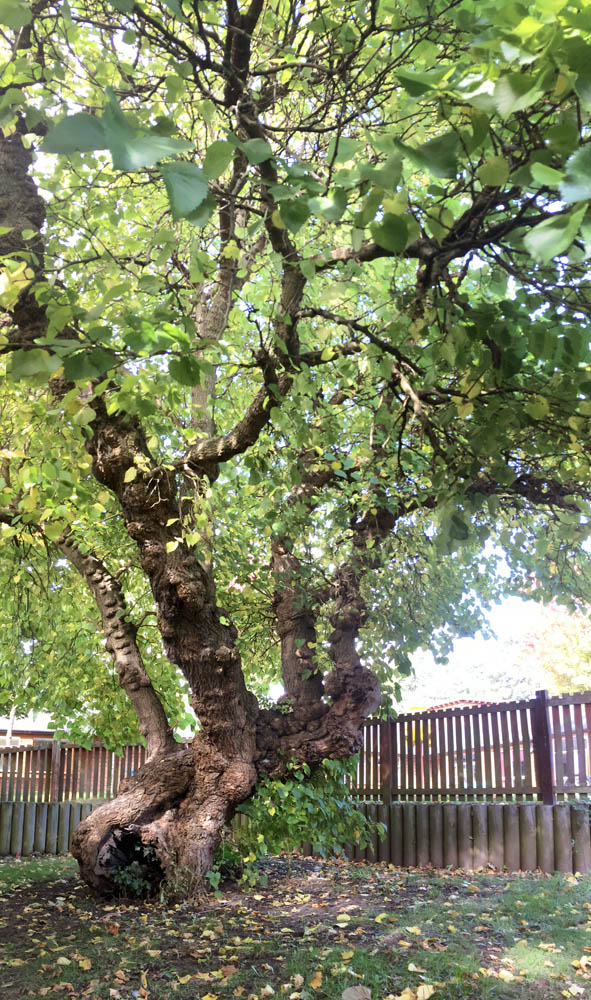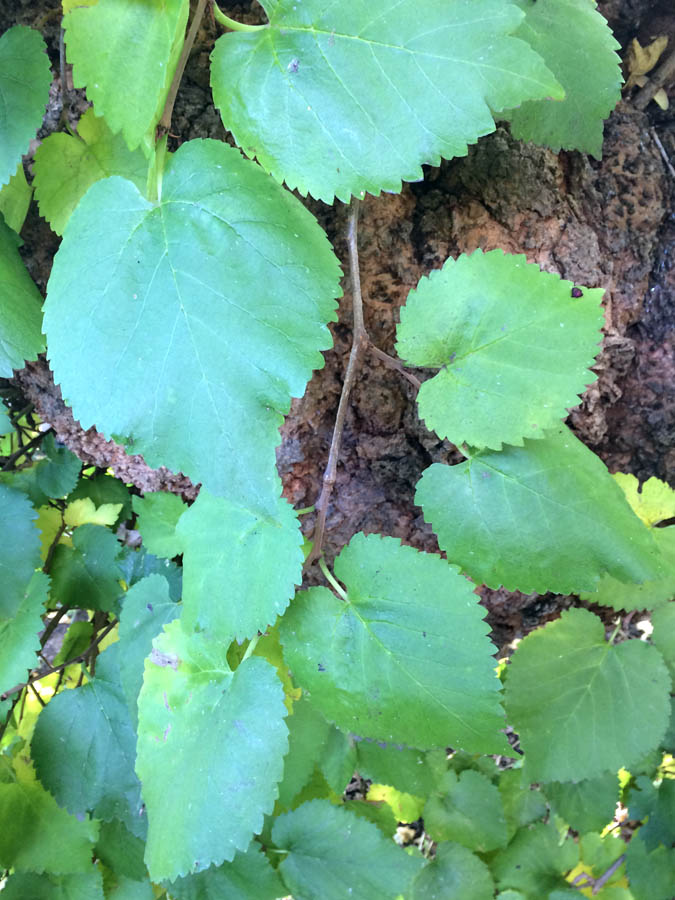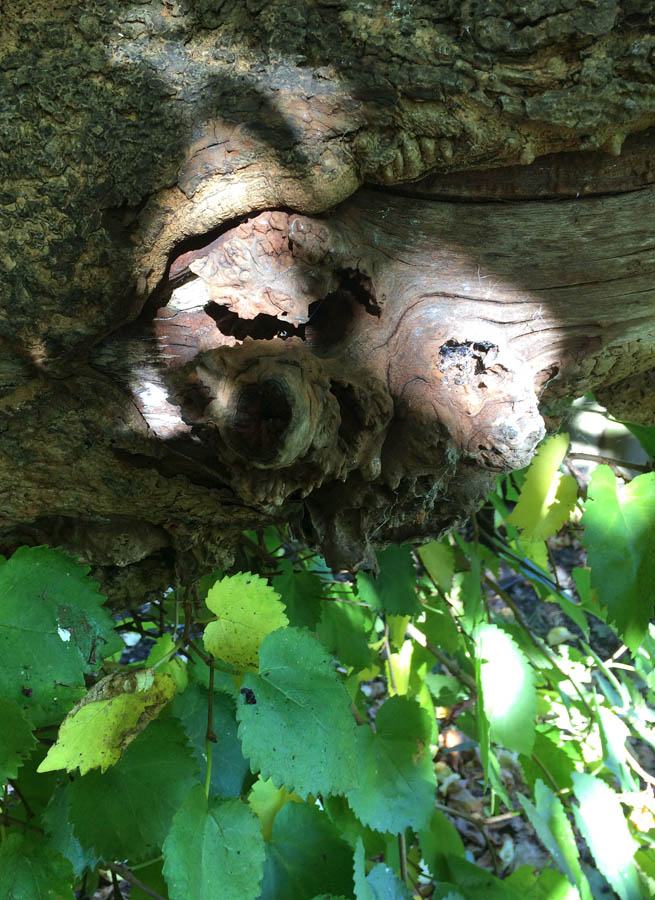 Today I had the pleasure of visiting a fine ancient black mulberry tree, a Morus nigra, at a secret location in Sheffield. From a distance the heart-shaped leaves could be mistaken for a lime although the tree’s squat, slightly bushy, form has more in common with a wind-blasted field oak. At closer range the hairy leaves are considerably larger than those of a lime, although confusingly some of the foliage is deeply lobed like that of a fig. This quirk is a characteristic of the younger leaves at the base of new shoots and is a helpful identification tool. Not that you are especially likely to come across a mulberry, as they are certainly not common and tend to be located in parks, private estates and the gardens of country mansions. Being sunlight lovers they are almost never found in woodlands.
Today I had the pleasure of visiting a fine ancient black mulberry tree, a Morus nigra, at a secret location in Sheffield. From a distance the heart-shaped leaves could be mistaken for a lime although the tree’s squat, slightly bushy, form has more in common with a wind-blasted field oak. At closer range the hairy leaves are considerably larger than those of a lime, although confusingly some of the foliage is deeply lobed like that of a fig. This quirk is a characteristic of the younger leaves at the base of new shoots and is a helpful identification tool. Not that you are especially likely to come across a mulberry, as they are certainly not common and tend to be located in parks, private estates and the gardens of country mansions. Being sunlight lovers they are almost never found in woodlands.
 Perhaps it is this association with the upper classes that helps perpetuate the popular misconception that mulberries were introduced into Britain by King James in the 17th century. It was actually the Romans who brought them here to cultivate for their fruit and their medicinal roots and bark. James was in fact responsible for promoting the planting of mulberries, as he was keen to establish silkworm colonies in what was a short and unsuccessful foray into the silk industry. The reason for him planting black mulberry is a matter of some debate, with some maintaining that the king was duped into planting M. nigra when the leaves of M. alba are the preferred food of the silkworm. Or it has been suggested that this species was deliberately chosen for its tolerance to the cold, wet UK climate.
Perhaps it is this association with the upper classes that helps perpetuate the popular misconception that mulberries were introduced into Britain by King James in the 17th century. It was actually the Romans who brought them here to cultivate for their fruit and their medicinal roots and bark. James was in fact responsible for promoting the planting of mulberries, as he was keen to establish silkworm colonies in what was a short and unsuccessful foray into the silk industry. The reason for him planting black mulberry is a matter of some debate, with some maintaining that the king was duped into planting M. nigra when the leaves of M. alba are the preferred food of the silkworm. Or it has been suggested that this species was deliberately chosen for its tolerance to the cold, wet UK climate.
 It is thought that this mulberry could be as much as 450 years old, placing it among the oldest trees in northern England. It is certainly possible, as this date corresponds with earliest documented mulberries elsewhere in the country. [1] Its ancient status is supported by other features: deeply riven bark with many knots and bulges, and the presence of epiphytic plants growing in the thin soils accumulated in the tree’s many crevices. However, coppiced trees such as this one are notoriously hard to age accurately. This difficulty is exacerbated by the mulberry’s tendency to grow a deceptively thick trunk and slump over in imitation of more venerable trees.
It is thought that this mulberry could be as much as 450 years old, placing it among the oldest trees in northern England. It is certainly possible, as this date corresponds with earliest documented mulberries elsewhere in the country. [1] Its ancient status is supported by other features: deeply riven bark with many knots and bulges, and the presence of epiphytic plants growing in the thin soils accumulated in the tree’s many crevices. However, coppiced trees such as this one are notoriously hard to age accurately. This difficulty is exacerbated by the mulberry’s tendency to grow a deceptively thick trunk and slump over in imitation of more venerable trees.
[1] There is a black mulberry in Syon Park, London, which is thought to have been planted in 1548.
















